Nasal airway obstruction
Nasal airway obstruction (NAO) is a condition that affects more than 20 million Americans.1 NAO is a condition in which the nasal passages are blocked and prevent a normal amount of air from passing through the nose. NAO can occur because of a structural abnormality in the nose or because of inflammation and swelling of the nasal passages.2 With nasal breathing delivering approximately 70% of airflow to the lungs3, any blockage that limits airflow can cause significant quality-of-life consequences.4
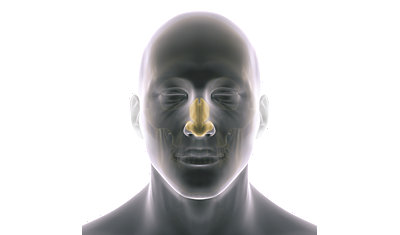
CAUSES
What causes nasal airway obstruction?
There are three anatomic regions that can contribute to nasal airway obstruction: the septum, turbinates, and side nasal wall. If impaired, each of these regions can contribute to symptoms that reduce a patient's quality of life.2
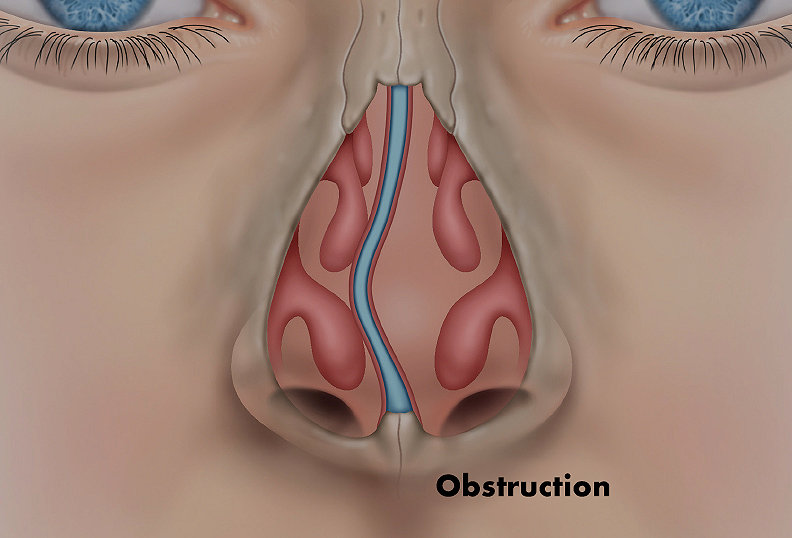
Septum
The cartilage wall between the nostrils can bend and block the nasal passage.
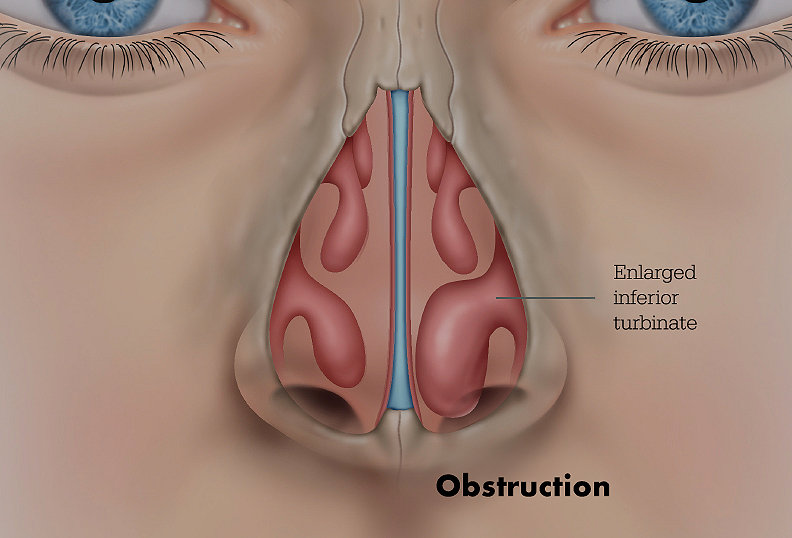
Turbinates
Ridges of bone and tissue inside the nose can limit airflow when enlarged.
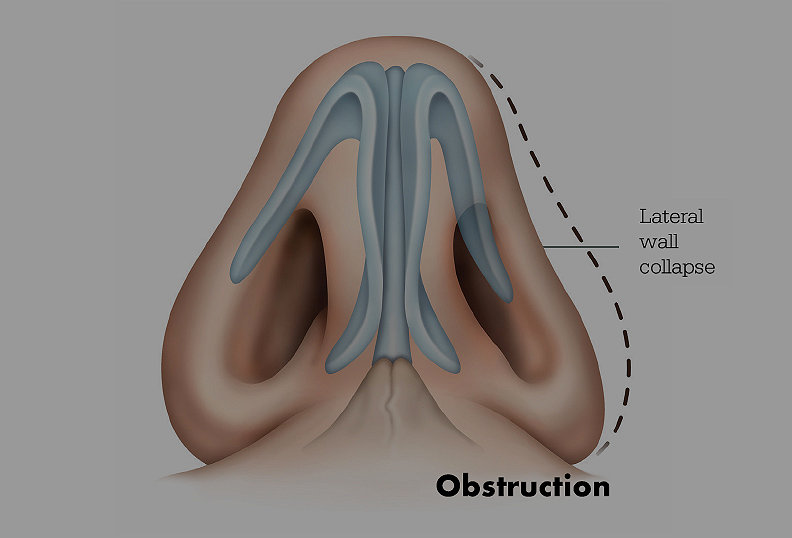
Lateral (side) wall
Weak or excessively flexible upper/lower cartilage in the outer nasal wall may cause it to collapse inward when a person inhales.
SYMPTOMS
There are several symptoms of nasal airway obstruction. It is important to discuss your symptoms with your doctor for diagnosis. Common symptoms include:5
- Nasal congestion or stuffiness
- Trouble sleeping
- Nasal blockage or obstruction
- Inability to get enough air during exercise or exertion
- Trouble breathing through your nose

LATERA® absorbable nasal implant
LATERA is an absorbable nasal implant used to support the upper and lower cartilage inside the lateral (side) wall of your nose. Supporting the cartilage may reduce nasal airway obstruction symptoms and help you breathe better.6
The implant is placed inside the nasal wall by an otolaryngologist (ear, nose, and throat [ENT] specialist) or facial plastic surgeon.
Talk to your doctor to find out if LATERA could be right for you.
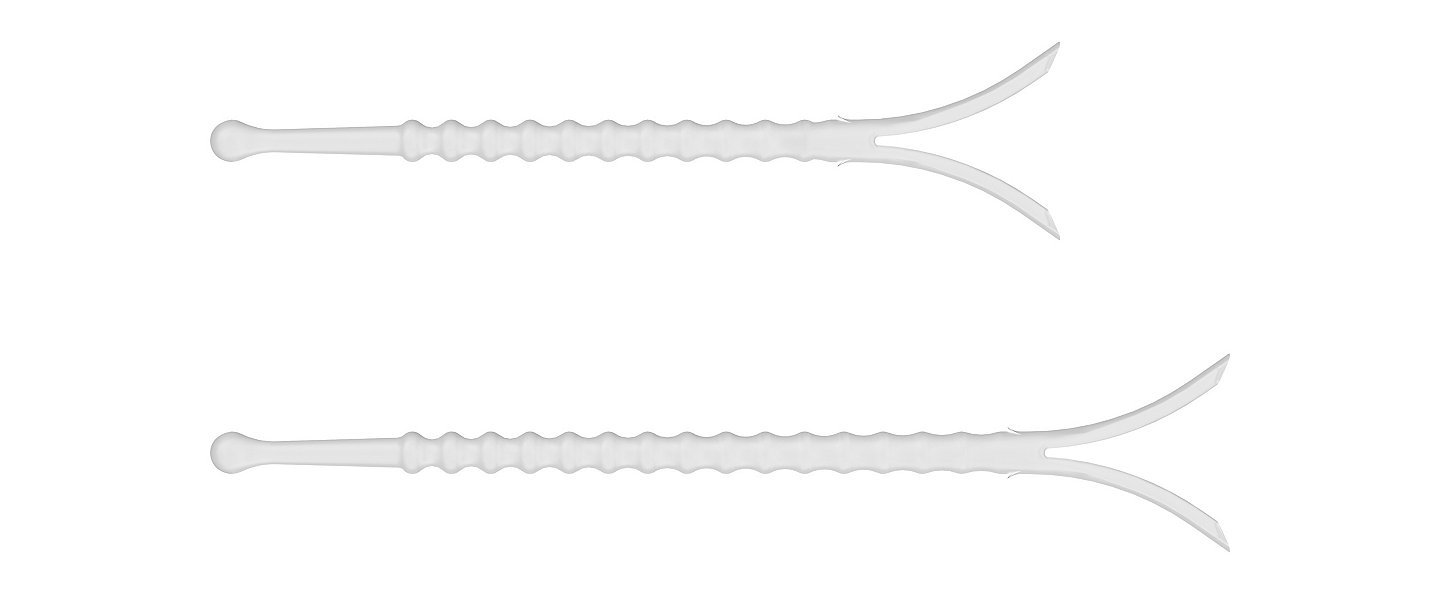
WHAT TO EXPECT WITH TREATMENT
LATERA may help you breathe better with little risk of changes to appearance.6 In clinical studies, NAO treatment resulted in significant quality of life improvements for patients suffering from nasal obstruction symptoms as measured by the validated Nasal Obstruction Symptom Evaluation (NOSE) survey.4
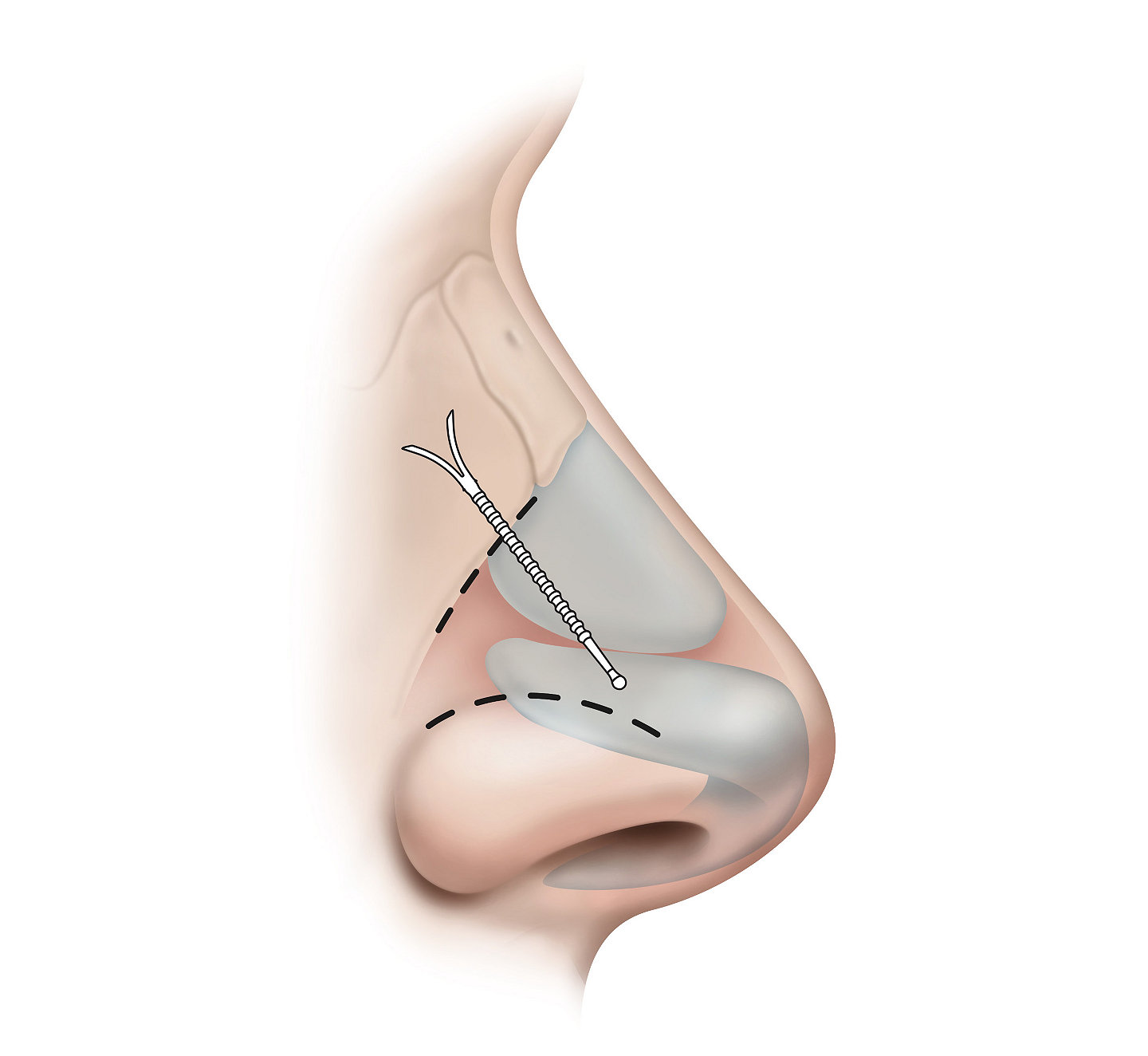
What to expect?
After the procedure patients may experience:5, 7, 11
- Reduced nasal congestion or stuffiness
- Less trouble breathing through the nose
- Improved ability to get enough air through the nose during exercise or exertion
- Reduced nasal blockage or obstruction
- Less trouble sleeping
Risks associated with surgically implanted materials:8*
- Bruising and inflammation
- Foreign body sensation
- Pain or discomfort
- Infection
- Minor cosmetic changes and extrusion of the implant
- Reaction to material
- Surgical impant removal
Excessive activity, trauma, or pressure may lead to bending, fracture, loosening or migration of the implant. Implants that are placed near the skin surface may be palpable or cause skin irritation.
*Clinical studies indicate that the majority of risks are minor and transient in nature.9,7
PATIENT SATISFACTION SURVEY*
88% of patients were satisfied with the procedure10
86% of patients were satisfied with their breathing after the procedure10
93% of patients were satisfied with their appearance after the procedure10
*91% of patients had a concomitant procedure which may include but is not limited to: septoplasty, turbinate reduction, and/or endoscopic sinus surgery.
FAQ
Questions about nasal airway obstruction and treatment
If you’ve been diagnosed with a nasal airway obstruction or are experiencing symptoms, here is a list of common questions to ask your doctor during your consultation to be well informed about your condition and treatment options:
- Is nasal valve collapse contributing to my nasal obstruction?
- Do you offer the LATERA® implant to support the lateral nasal cartilage?
- What are my risks and benefits to receiving the LATERA implant?
- Will the procedure be performed in the operating room or the clinic?
- What should I do after the procedure?
LATERA is a small, absorbable implant placed in the side wall of your nose. It’s inserted through a small access point inside your nostril to support your lateral nasal cartilage which can help make breathing easier.11
The implant is made of an absorbable material with an extensive history of use in a variety of medical applications. This product does not contain latex.
The implant material begins to absorb at approximately 18 months and is replaced by a collagen matrix.12
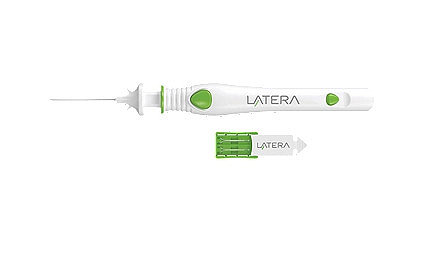
LATERA® absorbable nasal implant
The LATERA absorbable nasal implant supports the upper and lower lateral cartilage by anchoring above the maxilla to provide cantilever support.6,8 Nasal airway obstruction (NAO) is one of the most common complaints among patients who see an ENT physician, and its treatment can result in significant improvements in quality of life.13
LEARN MORE
References
- Value calculated based on 2014 US population estimate from US Census and World Bank data in conjunction with incidence numbers cited in: Stewart M, Ferguson BJ, Fromer L. Epidemiology and burden of nasal congestion. Intl J Gen Med. 2010;3:37-45.
- Clark DW, DelSignore AG, Raithatha R, Senor B. Nasal airway obstruction: prevalence and anatomic contributors. Ear Nose Throat J. 2018;97:173-176
- Crawford-Brown DJ. Theoretical and Mathematical Foundations of Human Health Risk Analysis. Boston, MA: Kluwer Academic Publishers; 1997:103.
- Rhee JS, Poetker DM, Smith TL, Bustillo A, Burzynski M, Davis RE. Nasal valve surgery improves disease-specific quality of life. Laryngoscope. March 2005;115(3):437-440.
- Nasal Obstruction Symptom Evaluation (NOSE) survey is a quality of life survey supported by the AAO Consensus Statement. Otolaryngology–Head and Neck Surgery: 162 STEWART et al February 2004.
- San Nicoló, M., Stelter, K., Sadick, H., Bas, M., & Berghaus, A. (2018). A 2-Year Follow-up Study of an Absorbable Implant to Treat Nasal Valve Collapse. Facial Plast Surg, 34(5), 545-550xx (Clinical data publication noted on page 12)
- Bikhazi, N., Ow, R. A., O'Malley, E. M., Perkins, N., Sidle, D. M., & Stolovitzky, P. (2022). Long-Term Follow-up from the Treatment and Crossover Arms of a Randomized Controlled Trial of an Absorbable Nasal Implant for Dynamic Nasal Valve Collapse. Facial plastic surgery: FPS, 38(5), 495–503. https://doi.org/10.1055/s-0041-1740948
- LATERA instructions for use 4645-002
- Stolovitzky P, Senior B, Ow RA, Mehendale N, Bikhazi N, Sidle DM. Assessment of bioabsorbable implant treatment for nasal valve collapse compared to a sham group. A randomized control trial. Int Forum Allergy Rhinol. 2019;9:850-856.
- Data on file (TR-21076 Spirox NVC Experience - Results calculated from 272 patient surveys.)
- San Nicoló M, Stelter K, Sadick H, Bas M, Berghaus A. Absorbable implant to treat nasal valve collapse. Facial Plast Surg. 2017;32:233-240.
- Rippy et al. Evaluation of absorbable PLA nasal implants in an ovine model. Laryngoscope Investig Otolaryngol. 2018 Jun; 3(3) 156-161
- Chandra RK, Patadia MO, Raviv J. Diagnosis of nasal airway obstruction. Otolaryngol Clinic North Am. 2009;42(2):207-25
The information presented is for educational purposes only. Stryker is not dispensing medical advice. Please speak to your doctor to decide what course of treatment is right for you. Only your doctor can make the medical judgment regarding which products and treatment is right for you. Any medical procedure carries certain risks and your doctor will explain all possible complications and/or side effects. The lifetime of any treatment is not guaranteed and varies by individual and each patient will experience a different post-operative activity and comfort level.
ENT-LATSYS-SYK-662239
